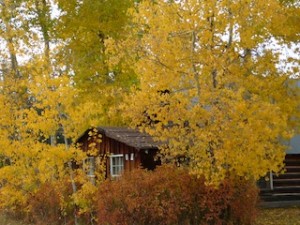 The North Fork History Project was started by members of the NFLA who love and respect the oral and written histories of the North Fork. The purpose of this page is to exchange ideas about how that history might be captured and share some of the results.
The North Fork History Project was started by members of the NFLA who love and respect the oral and written histories of the North Fork. The purpose of this page is to exchange ideas about how that history might be captured and share some of the results.
If you have questions or ideas about the North Fork History Project, please contact the committee chairperson, Lois Walker (lewalker@nvdi.com), or call 406-407-2791 and leave a message.
Oral History Interviews
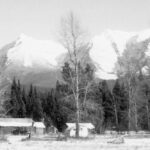
Beginning in the Fall 2011, members of the North Fork History Project began to record the oral histories of people who have lived in the North Fork for a long time. See the Oral History Interviews Page for recordings and transcripts of these interviews, along with supporting materials. If you have a North Fork connection of any sort, you’ll probably see some names you recognize. Even if not, it’s a fascinating (and ongoing) collection . . .
Walt Hammer Autobiography (New!)
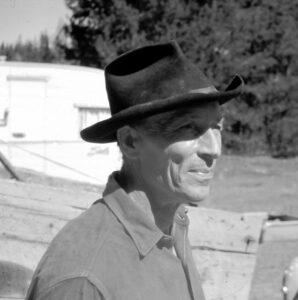
This autobiography chronicles the life and adventures of Walter J. Hammer, a long-time North Fork resident and well-known builder. Walt first came to Montana from Lincoln, Nebraska, in the spring of 1932. He had negotiated employment as a ranch hand for Matt and Mata Brill at their Kintla Guest Ranch in the northern portion of the North Fork. He subsequently worked for the Forest Service, and finally as owner of his own construction company.
During World War II he worked as a welder at the Kaiser Shipyard in Portland and then served in the U.S. Army from May 1942 until the end of the war. Afterward, he returned to the life he loved in the North Fork. He married his wife, the former Hazel Monson, there in 1948.
Walt eventually owned a number of properties in the North Fork, including his home and guest cabins at Placer Point off of Tepee Flats and a 160-acre former homestead at Tepee Lake. He was a very skilled builder and is well remembered for the cabins and many stone fireplaces that he built for North Fork residents.
In 1972, the Hammers sold their property at Placer Point, and in 1973 they moved to Green Valley, Arizona. Walt penned this autobiography after Hazel passed away in 1987, at the encouragement of friends and relatives who had visited the Hammers in the North Fork over the years. The manuscript was graciously donated to the North Fork Archives by Brian Carroll, a great-grandnephew of Walt’s.
Hint: There’s a handy index at the end of the document if you’re looking to find something specific.
Read/download the autobiography, Nov 10, 2024 update
(PDF format, 126 pages)…
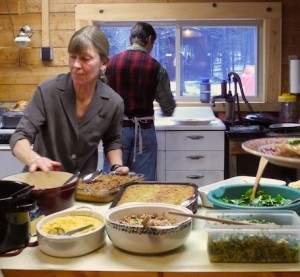 The Tradition of Thanksgiving Dinner at Sondreson Hall
The Tradition of Thanksgiving Dinner at Sondreson Hall
In celebration of the 40th anniversary of Thanksgiving dinner at Sondreson Hall, Pat Elliott wrote a short history in 2015 of this wonderful event. Read all about how the tradition of turkeys, the potluck, and the gathering of good friends began. And did you know that after the first Thanksgiving the tables were cleared and everyone danced? That would be a fine tradition to reinstate. So, read here all about the first Thanksgiving Dinner at Sondreson Hall written by Pat Elliott.
And click here to read about Thanksgiving 2015 including lots of photos.
Letters and Postcards from the North Fork
Look around in your trunks and attics and see what you can find in the way of North Fork history. That’s what one neighbor did and has shared it with us below.
This is a letter from Ethel Newton to Lucille McIntosh on November 10, 1926. It’s full of gossip about what is going on in the lives of North Forkers.
This is a letter from Dorothy McIntosh to her father on June 19, 1926.
Here are a series of post cards that were sent from the North Fork in the early 1900s.
Finally, here is a picture of the McIntosh Homestead in 1949 which was on what is the Wernick’s property today. Be warned, however, this file is over a MB.
History of the Flathead Valley
Here is a timeline of events that happened in the Flathead Valley starting in 1806 when Meriwether Lewis came up the Marias and looked southeastward toward Marias Pass where Highway 2 now runs. See the timeline here. And here is a brief synopsis of settlement in the North Fork Valley, specifically. See the synopsis here.
Information on Early Homesteaders
The following is an excerpt from Larry Wilson’s Hungry Horse News column on July 7, 2016 that provides some early history about Dan Block: Dan Block came to the North Fork in the late 1940s and he and his brother ran a commercial mink ranch at Trail Creek. He and his wife, Gerane, were known in the 1950s as the North Fork’s handsomist couple — Dan, tall dark and handsome, Gerane, beautiful with long flowing red hair. I can remember one occasion at a community dance when everyone stood around the dance floor and clapped as they danced. Plus, they were just great folks and friends to all of their neighbors like the Holcombs and Tom Reynolds. Later he worked, obtained a college education and became a distinguished and much-loved professor at Western Montana College in Dillon. His background on the North Fork no doubt contributed to his being a pioneer in outdoor classroom teaching.
Gathering stories on homesteaders – This is an article from Larry Wilson’s Hungry Horse News column on February 17, 2016 that provides some early history about Matt and Mata Brill.
North Fork Short Stories
The History Committee invites all North Fork writers (and we have a lot of them!) to submit stories about North Forkers that have lived in the past.
The Bart Monahan Homestead
A short story by Esther Chrisman about their home on the North Fork. Following is an excerpt:
The Bart Monahan homestead in the North Fork became ours in the summer of 1958. Bart had spent his last two years in the County Home. His small 10’ x 14’ cabin with a 10’ x 12’ dirt floor porch was trashed. The roof leaked, the door was broken in, and a bear had hibernated in his root cellar. It was disheartening for us. The neighbors all came to see what we had purchased. We thought the little cabin was past redemption until Ma Holcomb suggested “You would be surprised what a little whitewash would do!” Ma and Pa were dear to us and most of the North Forkers. They were so quick to help, provide whatever they could, and feed any and all who came to their door. We were new and gladly learned from them how to live in this remote area. Their first advice was to cut an escape road to the river. We had only one way in and out of our place.
Download the complete story The Bart Monahan Homestead from here.
Our Friend Tom
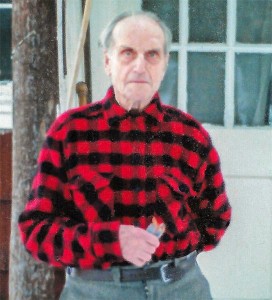
A short story by Esther Chrisman about Tom Reynolds. Following is an excerpt:
Tom Reynolds lived about five miles north of our mailbox. He had been portrayed as an Englishman who did not welcome guests. His notoriety came from the fact that he came to the North Fork as a friend of Billy Kruse. Billy Kruse was shot at what was referred to as the “Madame Queen” cabin. This cabin (house of ill repute) was built on five acres of the homestead that our friends, the Foreman’s, purchased from Ed Peterson. We met Ed. He was a mild-mannered gentleman who had homesteaded and lived there with his brother Emil. What a shock to learn he was the man who shot Billy Kruse. He was cited, not for shooting Billy, but for leaving him there to bleed to death. As far as I could learn, Ed was never prosecuted. Homesteaders were needed up there.
Download the complete story Our Friend Tom from here.
Introduction to Short Stories about Burt and Thelma Edwards by Debo Powers
I became interested in North Fork history from listening to stories by Burt and Thelma Edwards. They lived in a homestead cabin three miles north of Polebridge on the west side of the North Fork Road. I would sit for hours and listen to their stories. I wrote these two short stories while they were still alive. I read the draft stories to them and they corrected some of the details which helped a great deal in the editing process.
Wilderness Woman
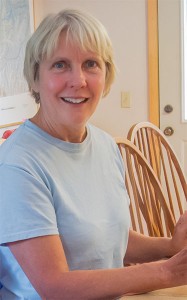
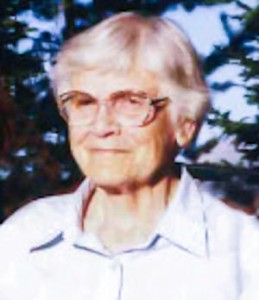
A short story by Debo Powers about Thelma Edwards on a women’s backpacking adventure in Glacier National Park in 1929. Following is an excerpt:
Four woman backpackers must have been quite a sight in 1929. Their broad hats kept the sun off their faces as they posed for a picture at snow-covered Logan Pass. Nurses were considered a wild bunch in those days and I suppose it was true, because here they were on a two-week backpacking trip into the heart of Glacier National Park in Montana.
Backpacking was not a common thing for women to do in 1929. Actually, it was not a common thing for anyone to do. In those days, people usually traveled through the wilderness on horseback. It wasn’t until many years later that backpacking became a popular sport and even a few decades ago, it was unusual to find women backpacking, especially without the company of men.
Download the complete story about The Wilderness Woman from here.
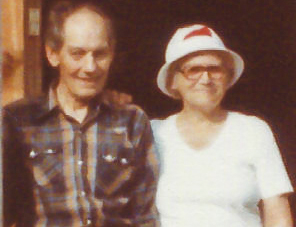 The Smoke Chaser
The Smoke Chaser
A short story by Debo Powers about Burt Edwards and his hiking journey to see Thelma in 1931. Following is an excerpt:
I must have missed the Loop Trail, Burt thought, it is so dark that I can hardly see anything. Maybe I’ll just keep going the way I’m heading and hike out that way. Burt’s flashlight had burned out a while back. He stopped for a moment to catch his breath and get his bearings.
He thought back over everything that had happened since he woke up at dawn. He had put in a hard day’s work on the pipeline at Many Glacier. As he worked, he couldn’t get Thelma out of his mind. She would be leaving for Inter-Mountain Union College on Monday and this weekend was the last time that he could see her until Christmas. How can I get from Many Glacier to Kalispell without a car? He pondered. Slowly a plan began to form in this mind as he worked on the pipeline. If I hike over Swiftcurrent Pass to Granite Park and out the Loop Trail to the Sun Road, I can hitch a ride to Belton and catch the train at 8am tomorrow morning. But can I hike that far in time? It would be relatively easy in daylight, but can I do it at night after a hard day of work?
Download the complete story about The Smoke Chaser from here.
North Fork Memories
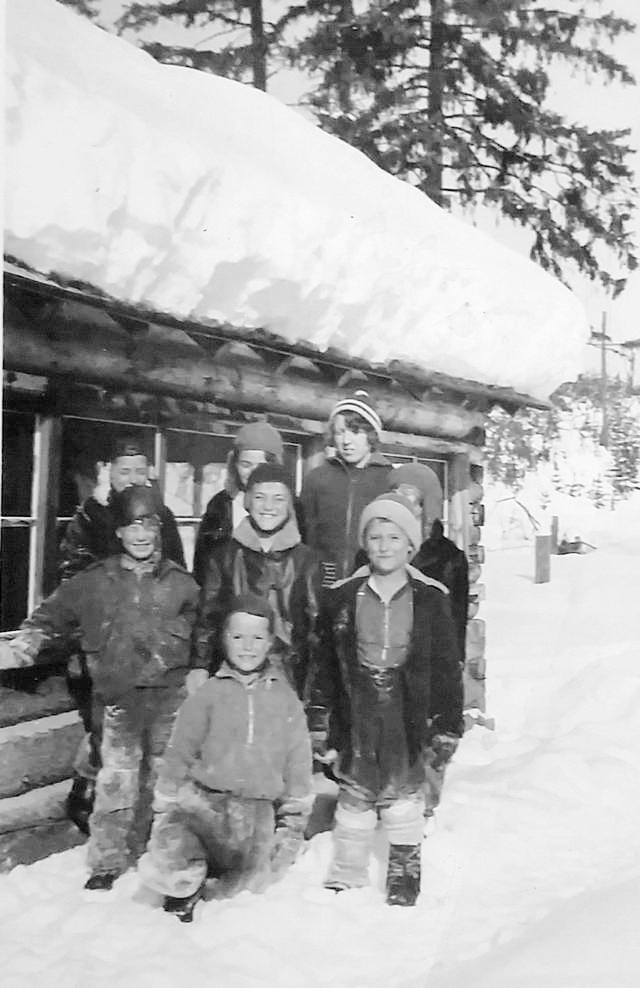
May 17, 2017 – From Larry Wilson’s column in the Hungry Horse News: Nonie’s Schoolhouse History. It says… The Ford School was the only school Nonie ever attended, and the land for the school was donated by her stepfather Ralph Day. The school was built by the community, just like the Community Hall years later. Nonie started school when she was 6 in 1934, but she can’t remember what year it was built. Read Larry’s full column here.
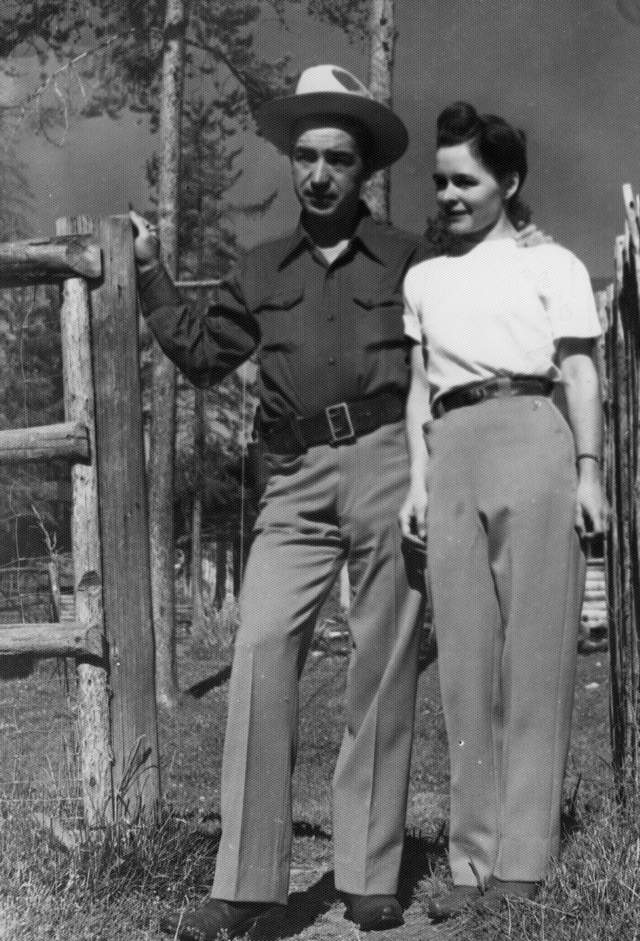
May 31, 2017 – From Larry Wilson’s column in the Hungry Horse News: Life on Kintla Ranch. It says… My folks purchased the Kintla Guest Ranch from Matt Brill in 1947 and my mother became the de facto general manager. My dad, Ross Wilson, was working full time as the District 1 Supervisor of Montana Fish and Game and was only present on his days off. Read Larry’s full column here.
May 13, 2017 – The Daily Inter Lake published an article about the Inside North Fork Road in Glacier National Park that included some good history of the road. Click here to get a copy of that article.
I think you should interview Wynonna Mathison. She lives in Kalispell. She is the daughter of Ester Day and the grandaughter of the Holcombs. She is 87. She has lots of stories of growing up on the North Fork.
I lived in Belton 1946 through1950 and remember the homesteaders coming to our school to obtain the years lessens for home schooling because both the inside and outside roads were not plowed.
Thanks for maintaining this website. I just spent 4 hours bouncing from story to story, and the history here is just fascinating!
Growing up in the Northfork in the summers are some of the fondest memories I have. I consider my self a Northforker still in my heart as well as a Trail Creek Irregular when it comes to firefighting.
Nearly all of the above people we encountered in our living there during that era. We had a garden that was planted Memorial Day and harvested Labor Day, along with spending every winter break, spring break, and a memorable month on my own own spring there.
Summer dances with volleyball and heated discussions on topics of preservation and the road punctuated the summers. We had a milk cow and selling “pet milk” drew a lot of people into our homestead by the road (Wurtz place/Flying W-Z) as well as it being the place to communicate emergencies.
A few people that were incredibly influential and memorable need to be added to the above list and (I can write a story or two about each of them and probably my mom still has the pictures to go with them) In no particular order here are some of the ones who come to mind: Roy Cooper, Tom Ladenburg, Frank & Ethel Newton, & Ruth and Lloyd Sondreson. There were many interesting adventures. The lessons were delivered by both the environment and the many characters who colored the landscape.
Hi everyone: Isn’t this a blast reading these wonderful stories. Thank you to all that have interviewed, transcribed and more. An especially big thanks to all that have shared your stories for us to cherish.
We bought our cabin on Teepee Lake in 1991. It was built for the Furakawas in the mid-1950s by Walt Hammer. He is mentioned in a few of these interviews, and we will cherish these memories along with our precious cabin in the years to come. We would love to hear from anyone else that knew the Hammers. No detail is too small.
We also would love to hear any stories you have of spending time at Teepee Lake in years past.
Thank you, Rachel, Jack and Elena Potter
I have a cutting board made by walt Hammer who had a cabin on the north fork. He was friends with my great grandfather Samuel Hamor, who had a cabin on red meadow creek.
A HUGE thank you to Walt and Hazel Hammer’s great-grand nephew, Brian Carroll for sharing Walt’s amazing memoir, and to Lois Walker for adding pictures, indexing and more to make it readily accessible to us all.
It’s very interesting to see the photo of the Hegland cabin. Minus the 2nd story the Hegland’s added, it is nearly the “exact duplicate” of the cabin Walt built for the Furukawas on Tepee Lake that we own and cherish.